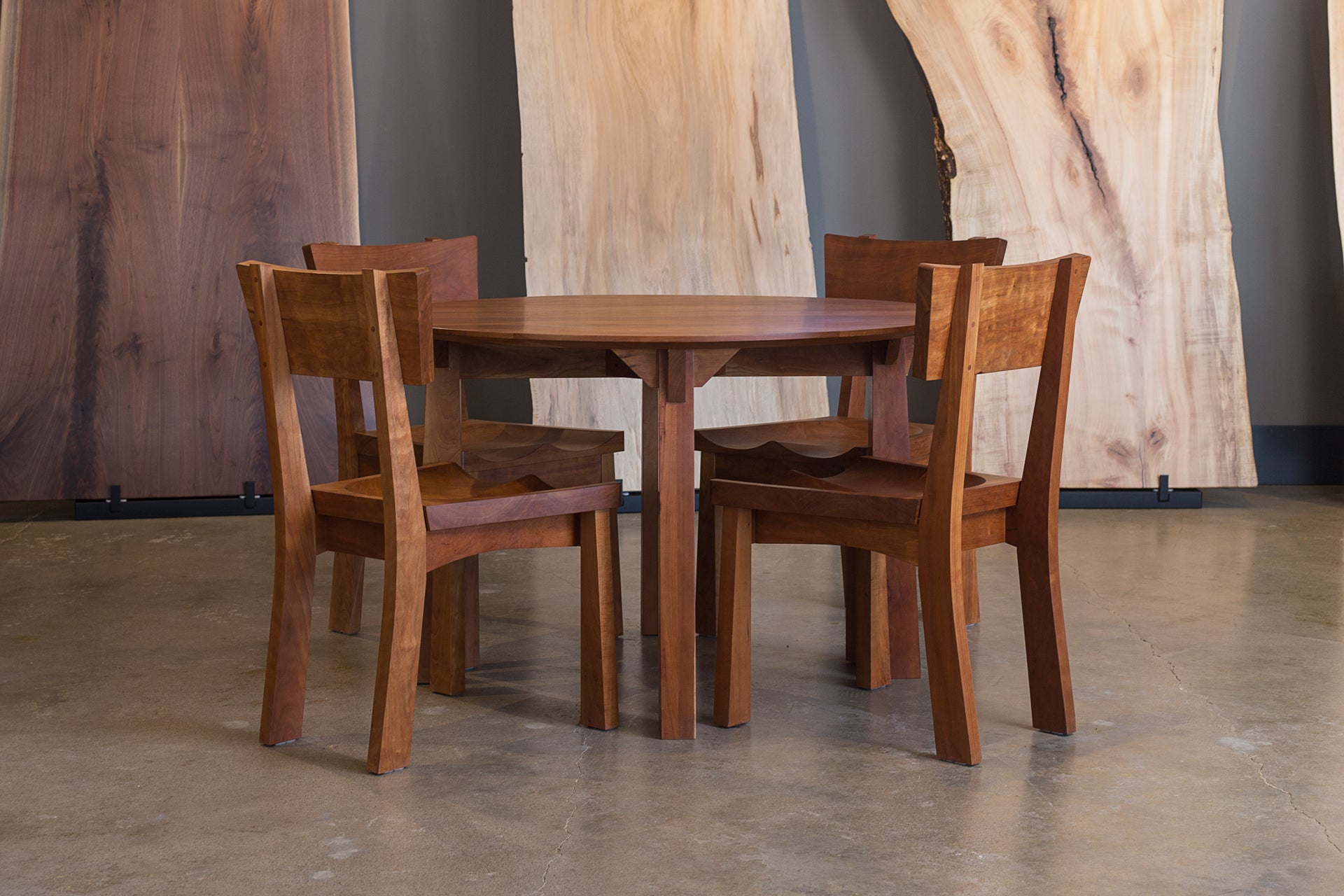Wood, a timeless and versatile material, has graced our homes for thousands of years. But with growing concerns about environmental impact, choosing the right type of wood becomes a decision that extends beyond aesthetics and performance.
For natural hardwood furniture, you can choose between domestic and exotic wood species. Which one is a better choice? In this blog post, we’ll dive into the specifics of domestic and exotic hardwoods to help you make informed choices when you furnish your home.
Domestic and Exotic Wood Defined
Domestic wood originates and grows within the specific region you reside in. Common wood species in North America include oak, maple, cherry, and walnut, all of which are usually available from local furniture makers.
Meanwhile, exotic refers to wood species that grow outside your region, typically from tropical or geographically distant areas. Some of the most popular exotic woods that are commonly used in furniture include rosewood, mahogany, teak, ipé, and ebony.
Now, why do people seek out exotic wood if there are locally available wood species? Well, while domestic woods offer a range of beautiful colors and patterns, some people are drawn to the striking appearance of certain exotic woods. Some exotic wood species are also naturally resistant to rot and moisture, making them ideal for outdoor furniture and high-traffic areas at home.
Domestic vs. Exotic Wood: Sustainability Factors
Domestic wood is generally more sustainable due to reduced transport, which translates to a reduced carbon footprint, but that’s not all. Let's delve into a few more factors to understand why domestic wood species are a better option as the main material for hardwood furniture:
Forest Management Practices
North America boasts well-established forestry programs, and many lumber yards offer wood certified by organizations like the Forest Stewardship Council (FSC) or Sustainable Forestry Initiative (SFI). These certifications help ensure responsible forest management practices like selective harvesting, reforestation efforts, and biodiversity protection.
The picture of exotic woods can be murkier because there’s hardly any way to tell if the wood is sourced sustainably. Illegal logging and unsustainable practices threaten rainforests and endanger wildlife. Rosewood, for example, the widely used name for several Dalbergia species, is on the brink of extinction due to overharvesting. About 90% of rosewood species growing in Southeast Asia alone have disappeared.
One way to ensure that the wood is sourced responsibly is through certifications like the Forest Steward Council (FSC) or Programme for the Endorsement of Forest Certification (PEFC) to ensure responsible sourcing. However, FSC-certified exotic wood can still have a larger environmental footprint due to transport distances.
Transportation and Carbon Footprint
Locally sourced wood minimizes transportation emissions, making it a more environmentally friendly choice. Importing exotic woods, on the other hand, significantly increases the carbon footprint, primarily due to the distance it travels from the forest to the furniture maker or lumberyard.
When wood travels long distances, typically by ship across oceans, it burns significant amounts of fossil fuels. These emissions contribute to greenhouse gases and global warming, increasing your carbon footprint.
According to one study, the carbon dioxide emissions of lumber from a Brazilian exotic species-planted forest range from 41–726 kg CO2 per dry metric ton of lumber at the consumer gate. Transportation accounts for approximately 34% of CO2 emissions, with distances varying from 150 to 4,169 km (median 372 km) between industries and consumer gates.
While research data allows us to understand the extent of carbon emissions from timber, what is important here, in simple terms, is to consider the distance the wood travels. In this aspect, it may be best to opt for species grown closer to your location if possible.
Wood Availability and Growth Rates
Many domestic hardwoods, like oak and maple, are fast-growing and readily available, allowing for sustainable, long-term use. Some popular exotic hardwoods, like mahogany, grow slowly and may be threatened by overharvesting. It is important to research the growth rate of a specific wood species and choose those known for sustainable practices, whether domestic or exotic.
Additional Considerations
Species-Specific Sustainability: When choosing the type of wood to use, it is essential to research specific wood species to ensure responsible sourcing, as sustainability concerns can vary even within domestic or exotic categories.
Durability and Longevity: Choosing a wood that will last for generations potentially reduces waste and the need for frequent replacements. Some exotic woods, like teak, are naturally rot-resistant and require minimal maintenance, making them potentially more sustainable in the long run.

The Enso Platform Bed in natural walnut. T.Y. Fine Furniture sources walnut wood domestically, from sustainably managed forests in Ohio. Check out the Enso Collection for more natural wood furniture options.
Making the Sustainable Choice: A Balancing Act
When it comes to picking hardwood for furniture, there's no one-size-fits-all sustainable solution. Domestic wood has its drawbacks, but exotic species come with even bigger issues. So, how do we make the right choice? It's all about finding balance in our decision-making process.
- Prioritize FSC-certified furniture, domestic or exotic. This certification ensures responsible forest management practices.
- Look for local furniture makers. Supporting local businesses often translates to reduced transportation distances and potentially a better understanding of the wood's origin, which is likely domestic.
- Consider reclaimed wood furniture. Reclaimed wood from old structures or salvaged lumber yards offers a unique and environmentally friendly option.
- Choose furniture built for longevity. Go for for well-made pieces using strong joinery techniques. Durable furniture reduces the need for replacements and lowers your overall environmental impact.
- Take extra measures for exotic woods. If you find that exotic wood is the best option for your home furniture, choose reputable suppliers who can demonstrate responsible sourcing practices.
The beauty of wood lies in its natural origins. To preserve this resource for future generations, it's important to make informed choices and adopt sustainable practices. Even small changes in wood selection and project planning can have a significant impact. Therefore, it's crucial to embrace the challenge and research responsibly.
